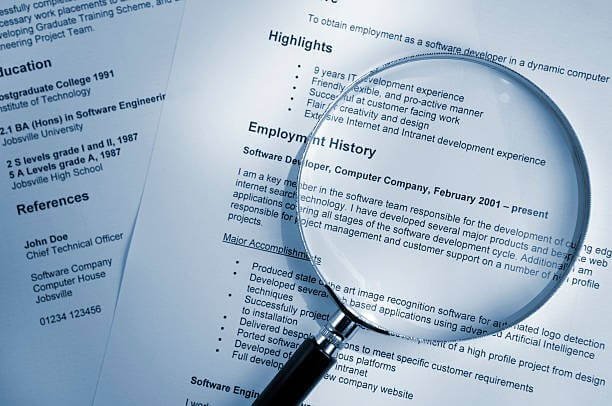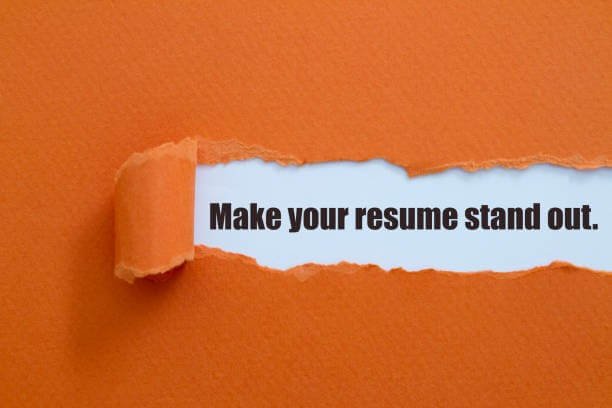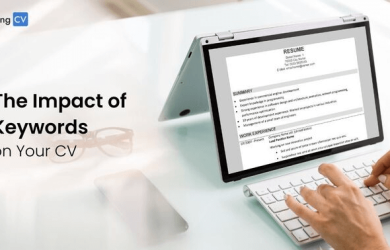Crafting a compelling executive-level resume involves a strategic approach to effectively showcase your leadership skills, achievements, and vision. As an entrepreneur with a diverse background in career coaching, resume writing, and engineering, you understand the importance of standing out in a competitive job market.
Remember, your resume is not just a list of past jobs; it’s a strategic document showcasing your value as a leader. It should communicate not only what you’ve done but also your potential for future achievements and contributions. As you aim to upscale your businesses, presenting a resume that reflects your executive caliber and entrepreneurial spirit is crucial.

Here are some key steps to craft an impactful executive-level resume:
Strong Executive Summary
What it is?
An executive summary at the top of your resume is a brief section that encapsulates your professional identity. It’s a pitch that highlights your most significant achievements, skills, and leadership qualities.
Why it’s important?
This section is your first opportunity to grab the reader’s attention. It sets the tone for the entire resume and provides a snapshot of your value as an executive.
How to craft it?
Be Concise: Keep it to 3-4 sentences or bullet points.
Tailor it: Customize this summary for each role you apply for, focusing on what’s most relevant to the position.
Highlight Key Achievements: Mention significant accomplishments, like leading a major turnaround or spearheading a successful merger.
Example:
“Seasoned executive with over 15 years of experience in leading multinational technology firms. Expert in driving operational excellence and technology innovation, with a proven track record of increasing revenue by 30% year-over-year. Skilled in strategic planning, team leadership, and market expansion, with a passion for building resilient, forward-thinking organizations.”
In this example, the summary is crisp and packed with information that showcases leadership skills, achievements, and an overall professional focus.
Next, we’ll explore how to emphasize leadership and management skills in your resume.
Emphasize Leadership and Management Skills
What it is?
This section of your resume should highlight your abilities as a leader and manager, demonstrating how you have effectively guided teams and projects to success.
Why it’s important?
Leadership and management skills are crucial at the executive level. Companies look for candidates who can inspire teams, drive change, and manage complex operations.
How to craft it?
Use Specific Examples: Share instances where your leadership directly contributed to a project’s success or a team’s improvement.
Focus on Impact: Demonstrate how your management style positively impacts the organization, whether through increased efficiency, improved team dynamics, or successful project completions.
Include Keywords: Use industry-relevant leadership and management terms that might be picked up by resume scanning software.
Example
“In my previous role as Director of Operations at XYZ Corp, I led a cross-functional team of 50+ members in a company-wide digital transformation initiative, resulting in a 40% increase in operational efficiency. My focus on collaborative leadership and open communication fostered a culture of innovation and high performance.”
This example showcases not just the role and responsibilities, but also the positive outcomes of the individual’s leadership style.
Next, I’ll explain the importance of including quantifiable achievements in your resume.

Quantifiable Achievements
What it is?
This aspect of your resume involves detailing your professional achievements with specific, measurable outcomes. It’s about demonstrating the tangible impact you’ve had in your roles.
Why it’s important?
Quantifiable achievements provide concrete evidence of your effectiveness as an executive. They help you stand out by showing the real-world results of your work, which is more convincing than listing duties or responsibilities alone.
How to craft it?
Use Numbers and Percentages: Wherever possible, quantify your achievements. For instance, mention the percentage growth in revenue, the amount of cost savings, or the number of projects successfully completed under your leadership.
Contextualize Your Achievements: Make sure to provide enough context so that the significance of your achievements is clear. For instance, turning around a failing department is more impressive if the reader understands the challenges you face.
Highlight Key Projects: Focus on major projects or initiatives you’ve led, especially those that align with the goals of the company or role you’re applying for.
Example
“Led a turnaround strategy for an underperforming business unit, increasing profitability by 150% within two years through strategic realignment and cost reduction measures. Successfully negotiated key partnerships resulting in a 25% increase in market share.”
In this example, the achievements are specific, measurable, and significant, demonstrating the candidate’s ability to drive substantial improvements.
Next, I’ll discuss how to effectively present your professional experience on your resume.
Professional Experience
What it is?
The professional experience section is a detailed account of your work history, focusing on roles and responsibilities that align with executive-level positions.
Why it’s important?
This section showcases your career trajectory and provides context for your accomplishments. It helps employers understand where your skills and experiences lie and how they’ve developed over time.
How to craft it?
Reverse Chronological Order: Start with your most recent position and work backward. This format is preferred as it highlights your progression to higher-level roles.
Emphasize Leadership Roles: Focus on positions where you had significant leadership responsibilities, especially if they are relevant to the role you’re applying for.
Use Action Verbs: Start each bullet point with a strong action verb like “Led”, “Managed”, “Developed”, or “Transformed”. This makes your experience more dynamic and impactful.
Be Selective: Include the most relevant and impressive positions. If you have a long career, it’s okay to omit earlier roles that are less relevant to your current executive focus.
Example
“Chief Operating Officer, ABC Technologies, 2018-Present
Transformed operational processes, resulting in a 20% increase in efficiency and a 15% reduction in costs.
Led a team of over 200, fostering a culture of innovation and accountability, and achieving the highest employee satisfaction scores in the company’s history.
Spearheaded the expansion into three new international markets, growing the company’s global presence.”
In this example, each bullet point starts with a strong action verb and provides specific details about the impact made in that role.
Next, I’ll explain how to showcase strategic thinking and innovation in your resume.

Showcase Strategic Thinking and Innovation
What it is?
This part of your resume highlights your ability to contribute to strategic planning, foster innovation, and drive business growth. It focuses on your role in developing and implementing forward-thinking strategies.
Why it’s important?
At the executive level, your ability to think strategically and embrace innovation is crucial. Businesses need leaders who can not only adapt to change but also drive it, ensuring the company remains competitive and relevant.
How to craft it?
Highlight Strategic Initiatives: Discuss any strategic planning sessions you’ve led or been a significant part of, especially those that had a positive outcome for the business.
Demonstrate Innovation: Share examples where you have introduced new technologies, processes, or ideas that transformed some aspect of the business.
Discuss Long-Term Impact: Focus on initiatives that had a lasting impact on the company, such as entering new markets, developing new product lines, or significantly improving operational efficiency.
Example
“Led the development and execution of a 5-year strategic plan that repositioned the company in the market, resulting in a 50% increase in customer base and a 35% increase in revenue. Championed the adoption of AI technologies across operations, improving process efficiency by 30%.”
This example illustrates strategic thinking and innovation by detailing the successful implementation of a long-term strategy and the integration of new technologies.
Next, we’ll look at how to include relevant education and professional development on your executive resume.
Include Relevant Education and Professional Development
What it is?
This section of your resume covers your academic qualifications and any ongoing professional development activities, like courses, certifications, or workshops.
Why it’s important?
While experience is key at the executive level, your educational background and commitment to continuous learning demonstrate your foundation of knowledge and your dedication to staying current in your field.
How to craft it?
List Highest Qualifications: Include your most advanced degrees (like a Master’s or MBA) and any relevant certifications. You can omit undergraduate degrees if you have advanced education unless they are particularly relevant or prestigious.
Mention Specialized Training: If you have completed executive training programs or specialized courses relevant to your career goals, include these.
Keep it Updated: Regularly add any new courses or certifications you complete to keep your resume current.
Example
“Education:
Executive MBA, London Business School, 2015
B.Eng. in Mechanical Engineering, University of Manchester, 2010
Professional Development:
Certified Project Management Professional (PMP), 2018
Advanced Leadership Program, Harvard Business School, 2017”
In this example, the education and professional development are relevant and add value to the candidate’s profile, especially for an executive role.
Next, I’ll discuss how to effectively showcase your skills and expertise on your resume.

Skills and Expertise
What it is?
This section of your resume is a concise list of specific skills and areas of expertise that are relevant to executive roles. It’s a quick reference point for employers to gauge your fit for a position.
Why it’s important?
Highlighting your skills and expertise helps to quickly communicate your professional strengths and areas of competence. It’s especially useful for recruiters who may skim resumes for key skills.
How to craft it?
Focus on Relevance: List skills that are directly relevant to the executive roles you are targeting. Avoid general or basic skills that are expected at this level.
Include Soft Skills: While technical and hard skills are important, executive roles also demand strong soft skills like leadership, communication, and strategic thinking.
Be Specific: Rather than broad terms like ‘leadership’, specify types of leadership skills, e.g., ‘transformational leadership’ or ‘team building’.
Example
“Skills:
Strategic Planning & Execution
Financial Acumen & Budget Management
Change Management
Global Business Operations
Data-Driven Decision Making
Cross-Cultural Leadership & Team Building”
In this example, the skills listed are specific and relevant to executive roles, showcasing a mix of strategic, operational, and interpersonal abilities.
Next, I’ll explain the importance of customizing your resume for your target role.
Customize for Your Target Role
What it is?
Customizing your resume for the target role involves tailoring the content to align closely with the specific requirements and preferences of the job you’re applying for.
Why it’s important?
A one-size-fits-all resume is less likely to stand out. Customization shows that you’ve put thought into how your skills and experiences specifically align with the needs of the role and the company.
How to craft it?
Research the Company and Role: Understand the company’s culture, mission, and the specific requirements of the role. Use this information to tailor your resume.
Align Your Summary and Skills: Modify your executive summary and skills section to reflect the language and priorities of the job listing.
Highlight Relevant Experience: Emphasize aspects of your professional history that are most relevant to the role. This might mean playing up certain experiences and downplaying others.
Example
If applying for a role as a Chief Technology Officer at a startup focused on renewable energy, your customized resume might emphasize your experience in leading technology teams in the renewable energy sector, driving innovation in green technologies, and scaling operations in a startup environment.
“Executive Summary:
Innovative Chief Technology Officer with a 10-year track record in leading cutting-edge renewable energy initiatives. Experienced in building and scaling technology teams in startup environments, with a strong focus on sustainable and efficient energy solutions.”
This example shows how customization makes your resume more relevant and appealing for the specific role and industry.
Next, I’ll discuss adding testimonials or endorsements to your resume.

Add Testimonials or Endorsements
What it is?
Including testimonials or endorsements on your resume involves adding short quotes from former colleagues, supervisors, or clients that speak to your skills, work ethic, and achievements.
Why it’s important?
Testimonials can provide a powerful and personal insight into your professional character and impact. They act as a form of social proof, supporting the claims you make in your resume.
How to craft it?
Choose Relevant Testimonials: Select endorsements that highlight the key qualities and achievements you want to emphasize. These should be from credible sources who have directly worked with you in a professional capacity.
Keep it Brief: Each testimonial should be a short, impactful statement. Long paragraphs are likely to be skipped over.
Integrate Tastefully: Place testimonials strategically in your resume, such as after your executive summary or within your experience section, where they align with specific roles.
Example
“Testimonial:
‘John’s innovative approach to digital marketing strategies not only transformed our online presence but also significantly boosted our lead generation by 70%. His leadership was instrumental in enhancing our brand visibility.’ – Jane Doe, Former Marketing Director, ABC Company”
This example shows a testimonial that reinforces the candidate’s skills and achievements, adding credibility to the resume.
Next, I’ll explain the importance of professional formatting and design for your resume.
Professional Formatting and Design
What it is?
The formatting and design of your resume involve the layout, font choice, and overall visual presentation of the document.
Why it’s important?
A professionally formatted and well-designed resume is crucial for making a good first impression. It should be easy to read, visually appealing, and convey a sense of your professional identity.
How to craft it?
Clean and Organized Layout: Use a layout that allows for easy skimming. Headers should be clear, and different sections should be easily distinguishable.
Consistent Formatting: Maintain consistency in your font choice, size, and color scheme throughout the document. This includes consistent bullet points, dates, and job title formatting.
Appropriate Font and Size: Choose a professional font like Arial, Calibri, or Times New Roman. Keep the font size readable, typically between 10 and 12 points.
White Space: Ensure there is enough white space to prevent the resume from appearing cluttered. This improves readability.
Contact Information: Clearly list your contact information at the top, including your name, phone number, email, and LinkedIn profile.
Example
Imagine a resume with a clean header with the candidate’s name and contact information. The sections are clearly divided with bold headings, and bullet points are used for easy reading. The font is professional, and there’s ample white space around each section to draw the eye naturally through the resume.
This professional presentation makes your resume visually appealing and easy to navigate, enhancing the reader’s overall experience.
Finally, I’ll discuss the importance of rigorous proofreading for your resume.
Proofread Rigorously
What it is?
Proofreading involves carefully reviewing your resume to check for typos, grammatical errors, inconsistencies, and formatting issues.
Why it’s important?
A resume with errors can negatively impact your professional image. It may suggest a lack of attention to detail or carelessness, which are not desirable traits in an executive.
How to craft it?
Check for Typos and Grammar: Use tools like spell checkers, but also manually read through your resume. Sometimes, spell checkers miss context-specific errors.
Review Formatting: Ensure that the formatting is consistent throughout the document. This includes alignment, bullet points, fonts, and headings.
Get External Feedback: Have someone else review your resume. A fresh pair of eyes can catch errors you might have missed and provide valuable feedback on the overall flow and presentation.
Read Aloud: Reading your resume aloud can help you catch awkward phrasings or errors that you might not notice when reading silently.
Example
As you proofread, you might notice that you used “lead” instead of “led” in a past-tense context. Or, you might find that the spacing between sections is uneven, making some parts of the resume look cramped. Correcting these small details can significantly improve the professional quality of your resume.
Rigorously proofreading your resume ensures it is polished and professional, reflecting the high standards expected of an executive.

Conclusion: Writing an Executive-Level Resume
With these detailed explanations and examples for each step, you’re equipped to create a compelling executive-level resume that effectively showcases your skills, achievements, and professional journey. Remember, your resume is a key personal marketing tool, and investing time in getting it right can significantly impact your job search success.




